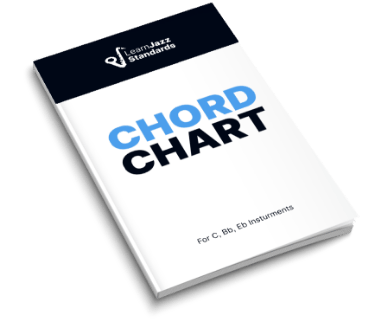Summertime is one of the most iconic jazz standards of all time! The Summertime chords and lyrics simply ooze American folk magic. Simply put, you should learn this jazz standard if you haven’t already, as it is a staple of jazz jam sessions and is even recognized outside of jazz circles.
In this article, we’ll learn about the George Gershwin tune Summertime and its impact on American music. Additionally, we’ll break down its famous chord progression and even play through an etude to help you solo over the changes!
Want to take your jazz playing to the next level? Check out the Learn Jazz Standards Inner Circle. The Inner Circle has everything you need to seriously supercharge your jazz chops and theory skills.
Improve in 30 days or less. Join the Inner Circle.
History and Legacy of Summertime
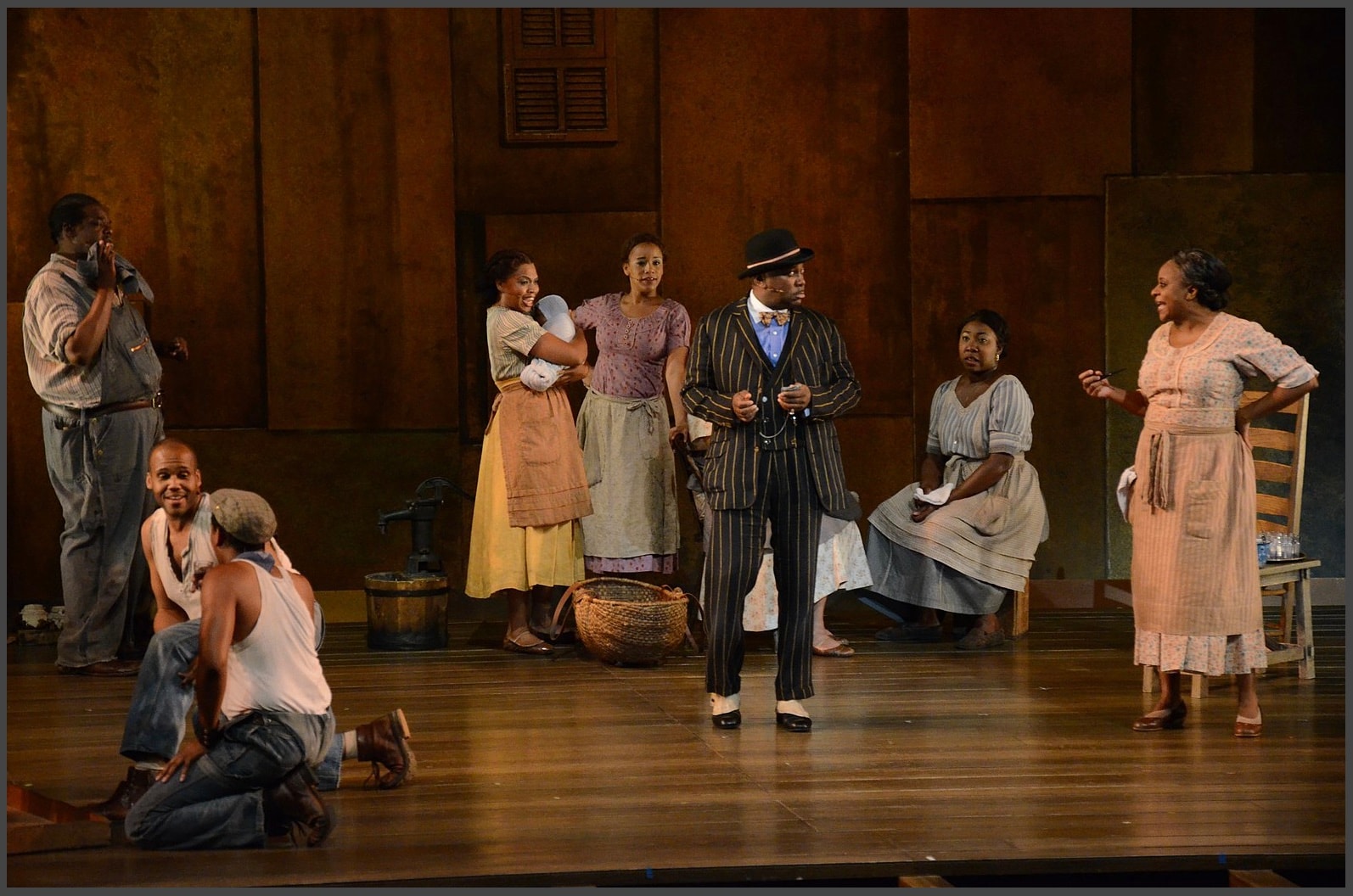
image source: Wikimedia Commons
Before diving into the song, we must discuss where it came from! “Summertime” originally appeared in the 1935 opera Porgy and Bess. The opera Porgy and Bess was based on a play called Porgy, which was based on a novel of the same name.
The original author of the novel and the play, DuBose Heyward, wrote the lyrics for Summertime, which appeared as a poem in his written works. When the time came to set it to music, George Gershwin rose to the challenge. His brother, lyricist Ira Gershwin, helped edit the poem to fit the composition.
The 1959 movie version of Porgy and Bess featured Loulie Jean Norman singing the classic song.
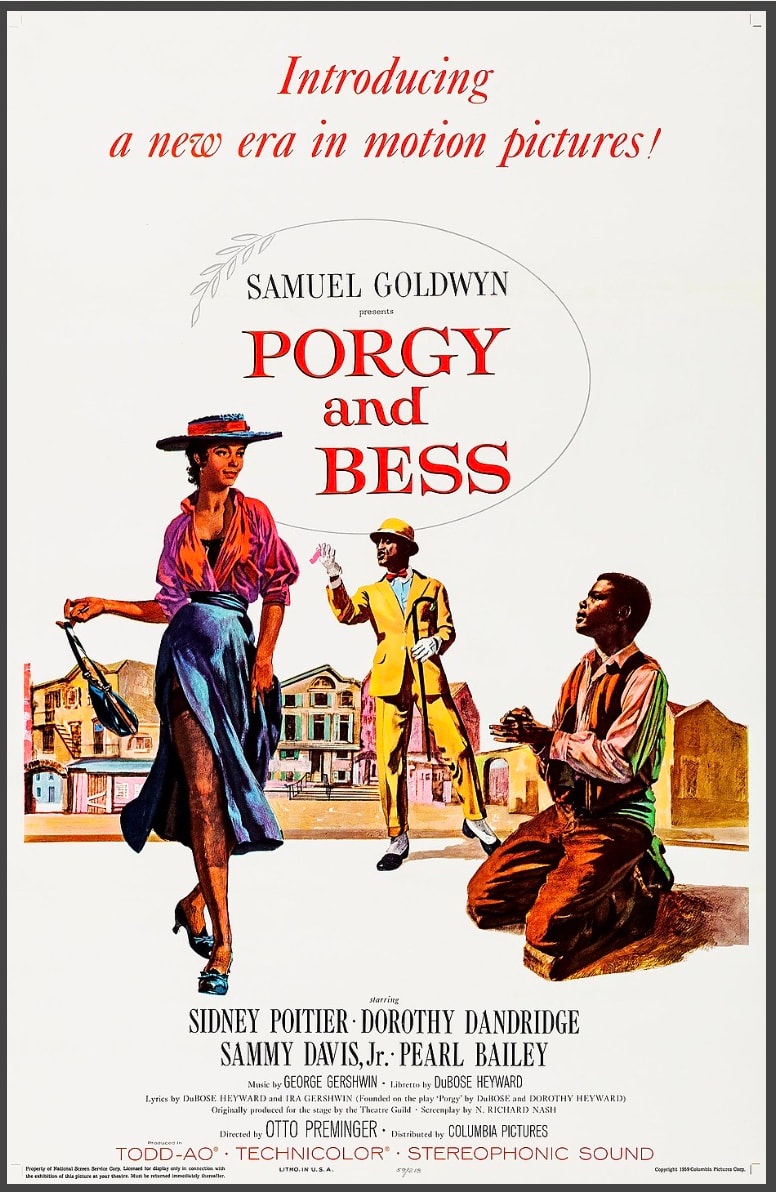
image source: Wikimedia Commons
“Summertime” would surpass Porgy and Bess in popularity and become one of the most important jazz standards in history. In fact, according to Guinness World Records, it is the most recorded song in history, having had 67,591 versions recorded since 1935.
Check out this article to learn about the second-most-recorded song in history, “The Girl from Ipanema.”
Summertime Lyrics
Here are the iconic lyrics penned by Ira Gershwin, and the original author of the novel Porgy, DuBose Heyward.
Summertime, and the livin’ is easy.
Fish are jumpin’, and the cotton is high.
Oh, your daddy’s rich, and your ma is good-looking.
So, hush, little baby, don’t you cry.
One of these mornings you’re gonna rise up singing.
Yes, you’ll spread your wings and you’ll take to the sky.
But ’til that mornin’, there’s nothing can harm you.
Yes, with daddy and mammy standing by.
Summertime, and the livin’ is easy.
Fish are jumpin’, and the cotton is high.
Oh, your daddy’s rich, and your ma is good-looking.
So, hush, little baby. Baby, don’t you cry.
BEFORE YOU CONTINUE...
If you struggle to learn jazz standards by ear, memorize them, and not get lost in the song form, then our free guide will completely change the way you learn tunes forever.

Summertime Chords and Analysis
Now, let’s learn the chords to this classic jazz standard. This song is usually performed in the key of A minor, but there are so many versions in different keys. Luckily, the progression shares some harmonic characteristics with a minor blues, so it’s relatively easy to transpose!
The form is 16 bars long and is generally played as a slow blues. We’ll analyze it in A minor because that’s most likely the key you’d play in on a jam session. Let’s start with the first four bars.
Summertime Line 1 (Bars 1-4)

The song opens on the i chord and moves to a minor iiø-V before returning to the i chord for bars 3 and 4. To anticipate the iv chord at the start of the 5th bar, we’ll change the i chord into a dominant I7 chord in the last half of the fourth measure.
Check out the chords used here on the guitar:
A-7
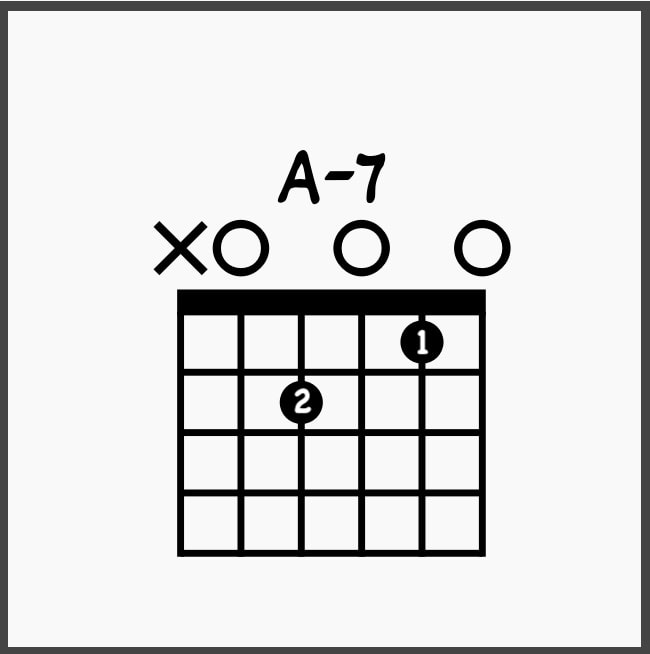
Bø
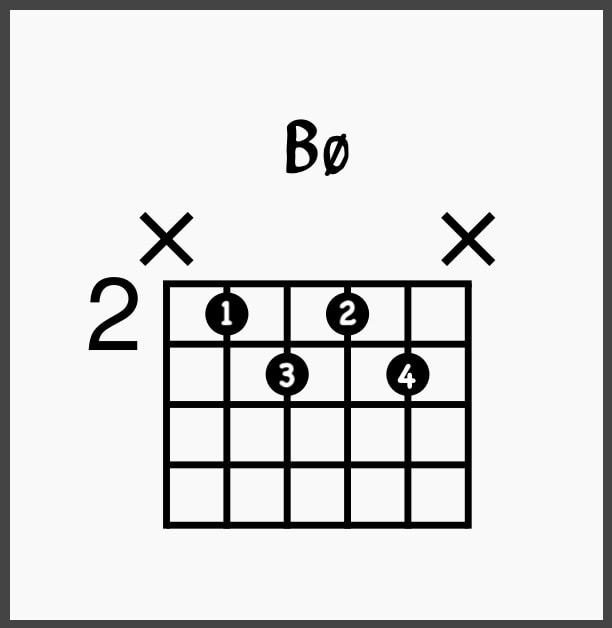
E7(b13)
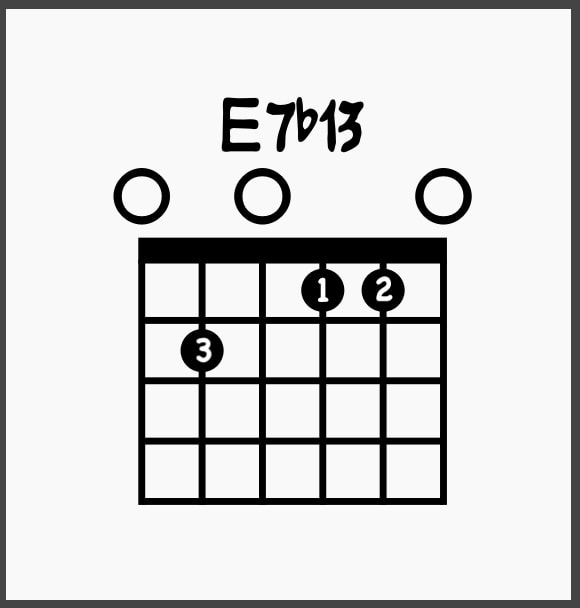
A7b9

Check out this article to learn more about chord extensions and alterations like the (b13) and the (b9)!
Summertime Line 2 (Bars 5-8)

The second line starts on the minor iv chord and moves to the bVI dominant chord in bar 6. Then, we have a long minor iiø-V back to A- over bars 7 and 8.
There are two new chords in this section! Here they are on guitar:
D-7
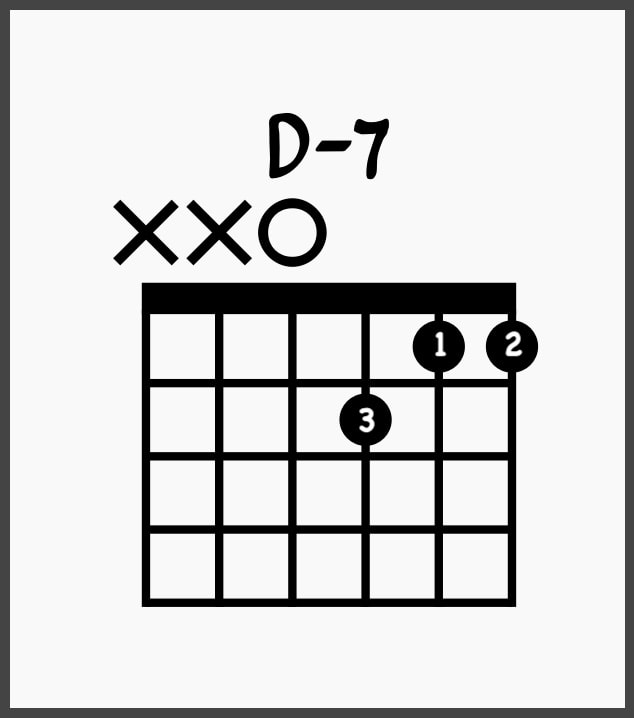
F7
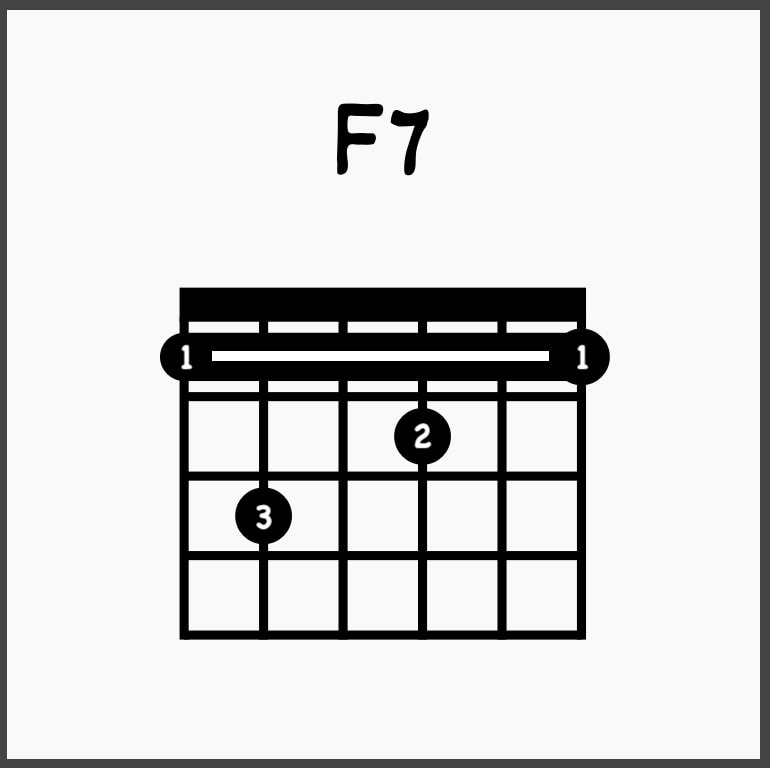
Summertime Line 3 (Bars 9-12)

The third line is almost identical to the first line, except for its last measure. Here, we have a II7-V7 progression to the relative major, which is C major in this key.
This section also introduces two new chords! Here they are on the guitar:
D7
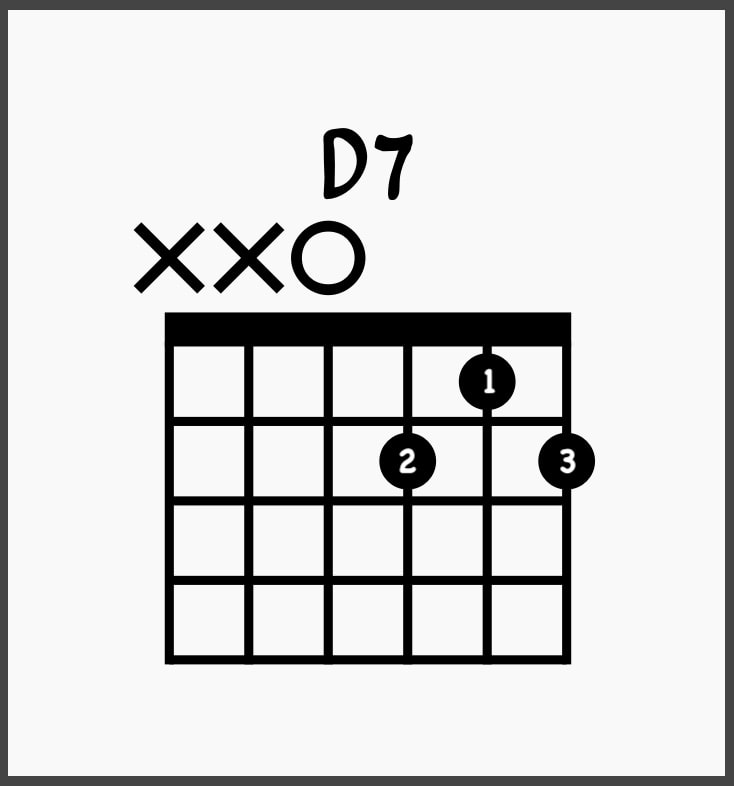
G7
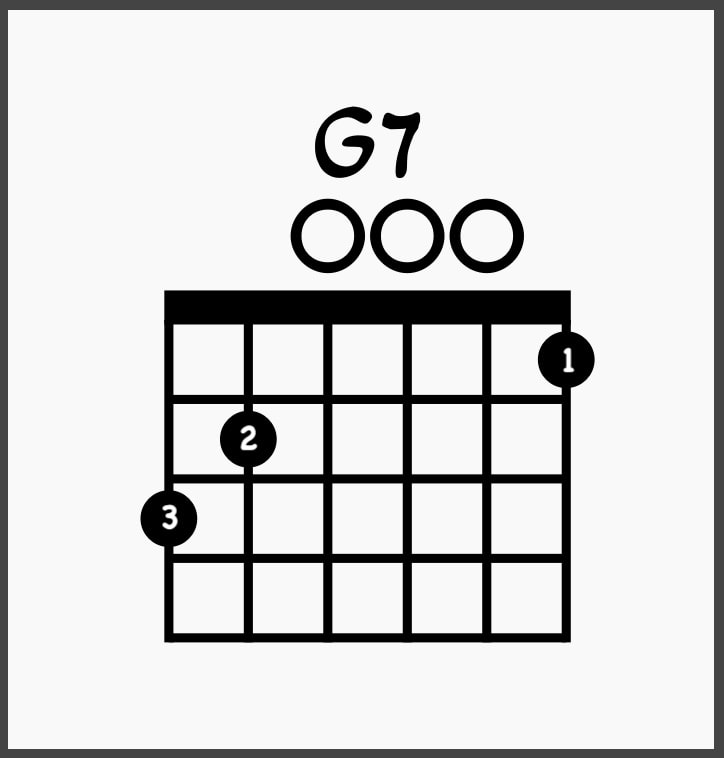
Summertime Line 4 (Bars 13-16)

Finally, we have the last line. You could think of this as a brief modulation to the relative major, but it is so brief that it makes more sense to me to think of it as a III chord in the key of A minor rather than being truly in the key of C major.
So, I’ll go with my gut and call it a III chord that moves back to the i chord. The second measure, or bar 14, contains a minor iiø-V back to the i chord. And lastly, the final two measures are a i chord and a ii-V, respectively. This sets us up for the top of the tune with an A-7 chord.
Check out this article to learn more about the ii-V-I progression, as it’s all over this tune!
Only one new chord was introduced in this section. Here it is on guitar:
Cmaj7
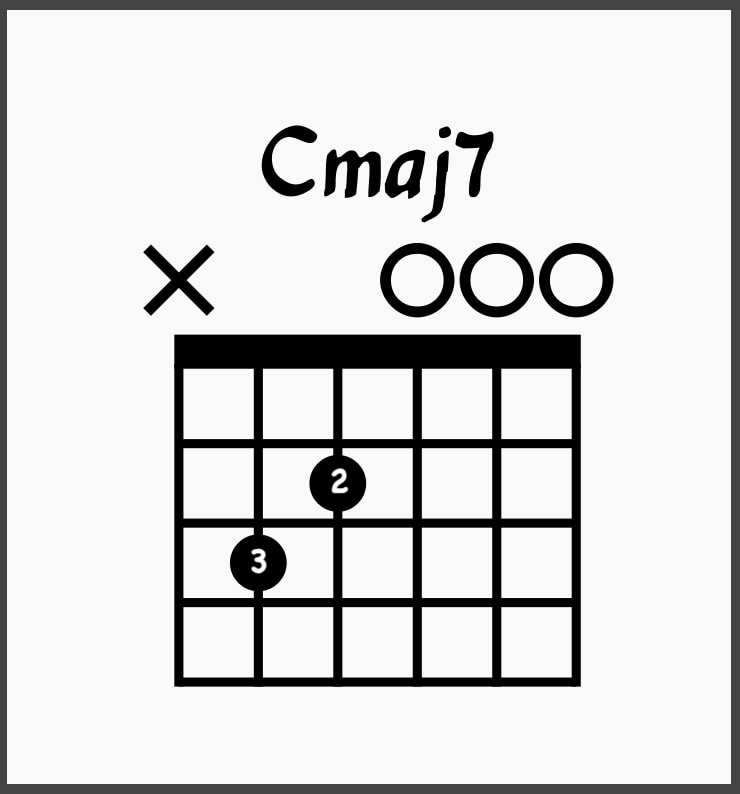
Take a listen to the progression in its entirety:
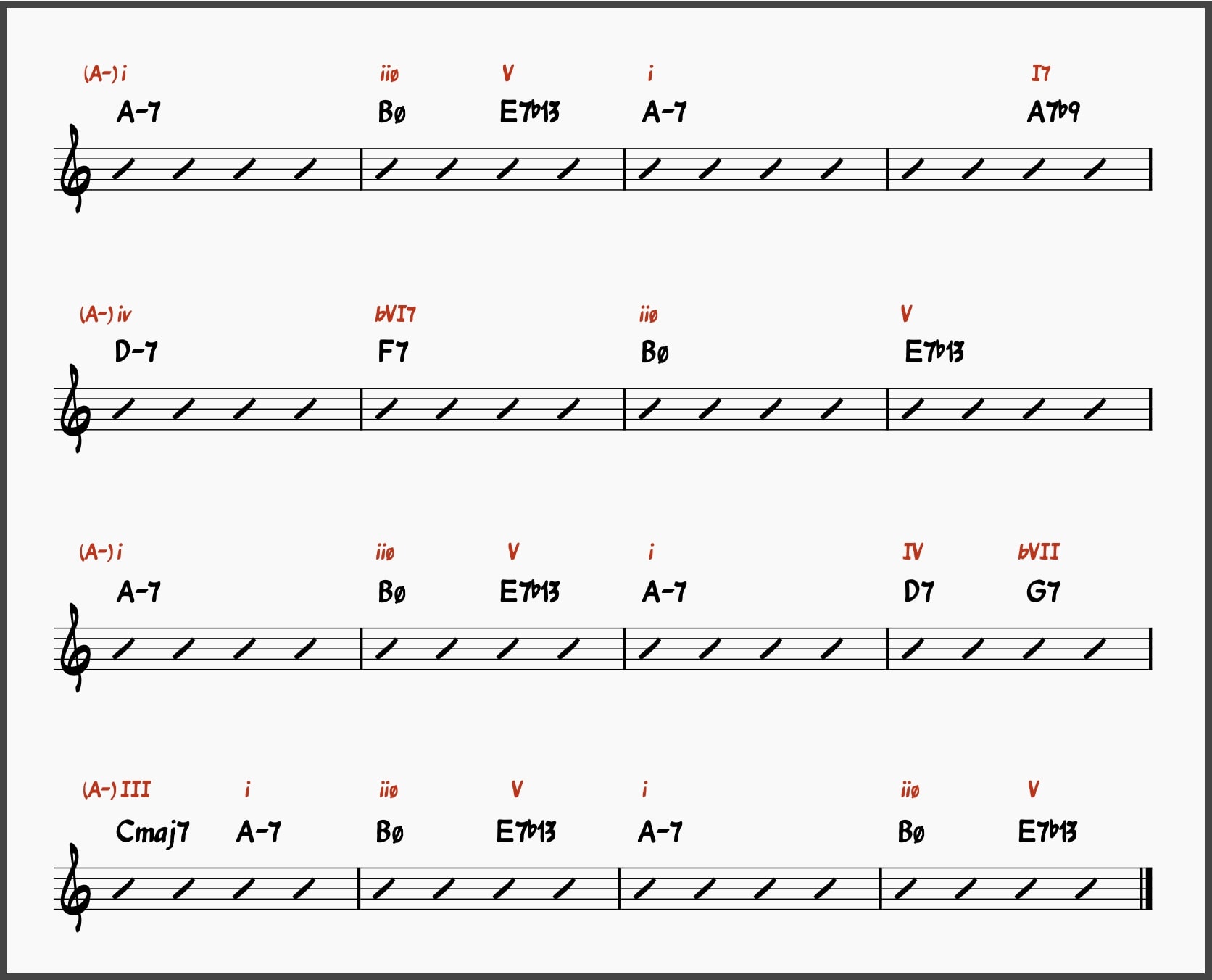
This song uses a bunch of seventh chords. Check out this article to learn more about 7th chords.
Improvising Over Summertime Chords
Now that we know the chords of Summertime, let’s practice improvising over it! I wrote this etude to introduce essential elements of jazz language we can use over this classic chord progression.
Summertime Etude Line 1 (Bars 1-4)

I predominantly use chord outlines in the first line to clearly state harmony. The first measure outlines an A-9 chord, using 5ths, 3rds, roots, and a 9th. Notice the numbers beneath each note. They’ll let you know the function of each note as it relates to the chord.
The second measure outlines the 7th and root of the Bø chord and clearly outlines the E7 chord, stopping on the (b13), which is held through into the third measure. To grab the A7 at the end of the fourth measure, I change the C to a C#, outlining an A7 chord.
Summertime Etude Line 2 (bars 5-8)

In the second line, I play a motif over the first two measures, changing notes to reflect the changing harmony. The first measure is a D-9 chord. I then change the E to an Eb to outline an F7 chord.
I predominantly stick to chord tones for the last two measures and outline the iiø-V using a triplet figure in the third measure and an arpeggio in the fourth.
Summertime Etude Line 3 (bars 9-12)

I play more chromatically in the third line and incorporate nondiatonic tones and linear, stepwise motion to give these phrases a bebop flair. I also use enclosure figures to target chord tones on strong beats.
Summertime Etude Line 4 (Bars 13-16)

In the final line, I use a chromatic approach and passing tones, enclosure figures, and chord outlines to capture the essential harmonic information while playing with rhythmic variety and interest. I even use a minor pentatonic melodic cell in the third bar over the A-7 chord.
Check out this article to learn more about how to use pentonic scales effectively in your solos!
Summertime Etude (Bars 1-16)
Here is the etude in its entirety:
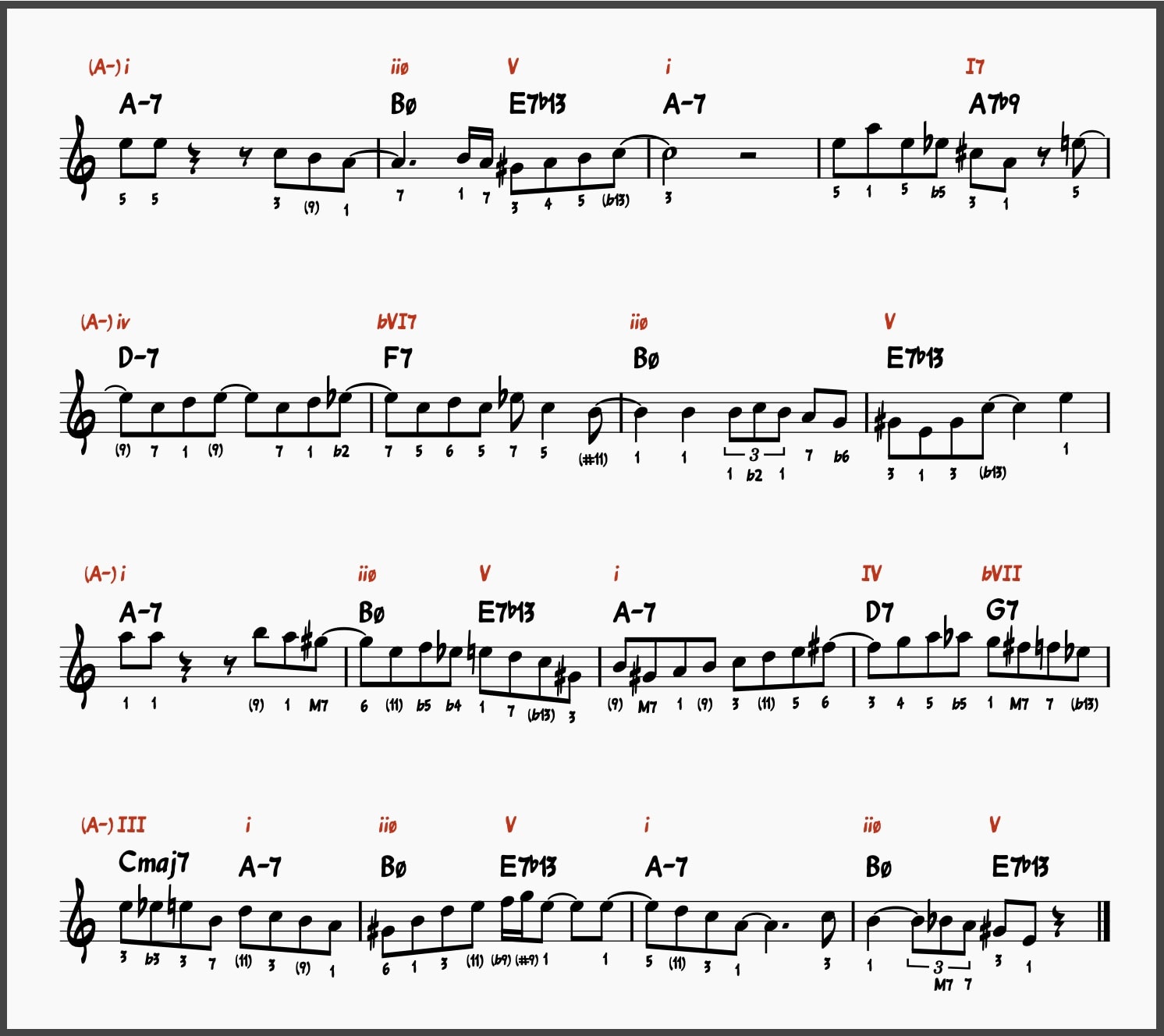
Want to learn more about chromatic passing tones, enclosure figures, chord outlines, and other staples of jazz language? Check out this article on jazz language.
5 Versions of Summertime You Should Check Out
Remember, this is one of the most recorded songs in music history! These five versions are the ones that I’ve fallen in love with the most, but there are many, many, many surprising and unique renditions of this classic jazz standard.
1. Billie Holiday, From the Single Summertime (1936)
One of the earliest and most recognizable versions of “Summertime” was Billie Holiday’s 1936 single, which is in Bb.
2. Ella Fitzgerald and Louis Armstrong, From Porgy and Bess (1957)
Despite not being the first recorded version, this might be the “classic” version of “Summertime” (at least in my mind). When I think of “Summertime,” I think of Ella Fitzgerald and Louis Armstrong. This version is in B minor, not A minor!
3. Chet Baker, From Chet Baker Quartet Vol. 2 a.k.a. Summertime (1955)
This is an excellent rendition of “Summertime.” Just be warned that this version is in D minor, not the standard A minor!
4. Jonathan Kreisberg, From Nine Stories Wide (2009)
This is a fantastic rendition of Summertime—it’s in the key of E minor and is in 5/4 time! Definitely give this one a listen.
5. Janis Joplin, from Big Brother and the Holding Company’s Cheap Thrills (1968)
Many versions of this song have been recorded by artists who aren’t typically considered “jazz.” The folky vibes saturating “Summertime” make it an attractive cover for blues, folk, country, and rock artists.
One of my favorites is by Big Brother and the Holding Company, which featured Janis Joplin on vocals. Her version is absolutely haunting. Definitely give it a listen, but be warned—it’s in G minor!
Want To Master Jazz Standards Like Summertime? Check Out The Learn Jazz Standards Inner Circle!
Ready to take your playing to the next level and learn other incredible jazz standards like Summertime? Check out the Learn Jazz Standards Inner Circle. The Inner Circle has everything you need to take your jazz playing to the next level!
Improve in 30 days or less. Join the Inner Circle.











